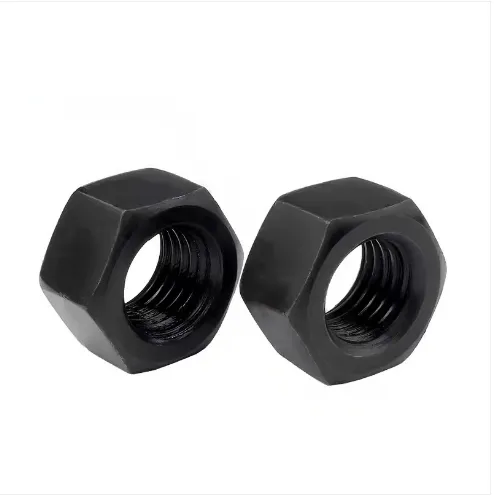Connecting Bolt Manufacturing Solutions for Enhanced Industrial Performance and Efficiency
تشرینی یەکەم . 11, 2024 10:58 Back to list
Connecting Bolt Manufacturing Solutions for Enhanced Industrial Performance and Efficiency
Connecting Bolts Factories The Backbone of Modern Manufacturing
In the intricate web of modern manufacturing, connecting bolts factories play a pivotal role, providing essential components that ensure the structural integrity and operational efficiency of countless products. These seemingly simple metal fasteners are vital in various industries, from automotive and aerospace to construction and electronics. This article explores the importance, production processes, technological advancements, and future trends of connecting bolts factories.
The Importance of Connecting Bolts
Connecting bolts serve as the unseen heroes in assembly processes. They secure parts together, ensuring that machinery and products function correctly. In the automotive industry, for instance, connecting bolts are crucial for assembling engines, transmissions, and body frames. A failure in these components could lead to catastrophic consequences, underscoring the need for high-quality bolts produced by specialized factories.
Moreover, the construction sector relies heavily on connecting bolts to join structural elements, such as beams and columns. The safety and durability of buildings and bridges depend on the reliability of these fasteners. As such, connecting bolts factories must adhere to stringent quality standards and regulations to ensure that their products can withstand the demands of various applications.
Production Processes in Connecting Bolts Factories
The production of connecting bolts involves several stages, each requiring precision and expertise. The process typically begins with selecting the appropriate raw materials, which may include various grades of steel, alloyed metals, or even plastics. The choice of material greatly impacts the strength, corrosion resistance, and overall performance of the finished product.
Once materials are selected, the manufacturing process begins with forging or machining. Forging involves shaping the metal using compressive forces, while machining entails cutting and shaping the metal on a lathe or milling machine. Both methods have their advantages, but forging often produces stronger bolts due to the alignment of the metal's grain structure.
After the initial shaping, the bolts undergo heat treatment to enhance their mechanical properties. This process involves heating the bolts to specific temperatures and then cooling them, resulting in improved strength and ductility. Following heat treatment, the bolts are often coated with materials such as zinc or epoxy to enhance their resistance to corrosion and wear.
connecting bolts factories

Technological Advancements
In recent years, technological advancements have transformed the connecting bolts manufacturing landscape. Automation and robotics have streamlined production processes, increasing efficiency while maintaining high-quality standards. Computer numerical control (CNC) machines play a significant role in producing precise and consistent bolt sizes and shapes.
Additionally, the integration of Industry 4.0 technologies, such as the Internet of Things (IoT) and artificial intelligence (AI), has revolutionized how connecting bolts factories operate. IoT devices enable real-time monitoring of machinery and production lines, allowing for predictive maintenance and minimizing downtime. AI algorithms can analyze production data to optimize processes and reduce waste, leading to more sustainable manufacturing practices.
Future Trends
Looking ahead, the future of connecting bolts factories is promising, driven by innovative materials and evolving market demands. The rise of electric vehicles (EVs) and renewable energy technologies is expected to increase the demand for specialized connecting bolts that meet the unique requirements of these industries. Lightweight materials, such as titanium or high-strength composites, may gain prominence as manufacturers seek to reduce weight and improve energy efficiency.
Moreover, sustainability will become a more significant focus in the production of connecting bolts. Factories will likely adopt greener practices by minimizing waste, recycling materials, and utilizing eco-friendly coatings. As consumers and industries increasingly prioritize environmental responsibility, connecting bolts factories that embrace sustainable practices will have a competitive edge.
Conclusion
Connecting bolts factories are an essential component of the manufacturing ecosystem, providing the fasteners that hold the modern world together. As technology advances and industries evolve, these factories will continue to innovate, ensuring that they meet the demands of a changing marketplace. By focusing on quality, efficiency, and sustainability, connecting bolts factories will be well-positioned to thrive in the future, reinforcing their role as the backbone of modern manufacturing.
Latest news
-
Reliable Axle Nuts Supplier | Quality & Precision Fasteners
NewsAug.23,2025
-
Durable Bolts for Lawn Mower Handle - Top Supplier & Manufacturer
NewsAug.22,2025
-
High-Quality Bolts for Lawn Mower Handle Supplier & Manufacturer
NewsAug.21,2025
-
Reliable Axle Nuts Supplier | High-Quality Automotive Parts
NewsAug.19,2025
-
Premium Wire Bolts Suppliers | Durable & Reliable Fasteners
NewsAug.18,2025
-
Leading Metric Wood Screw Companies & Manufacturers
NewsAug.17,2025
